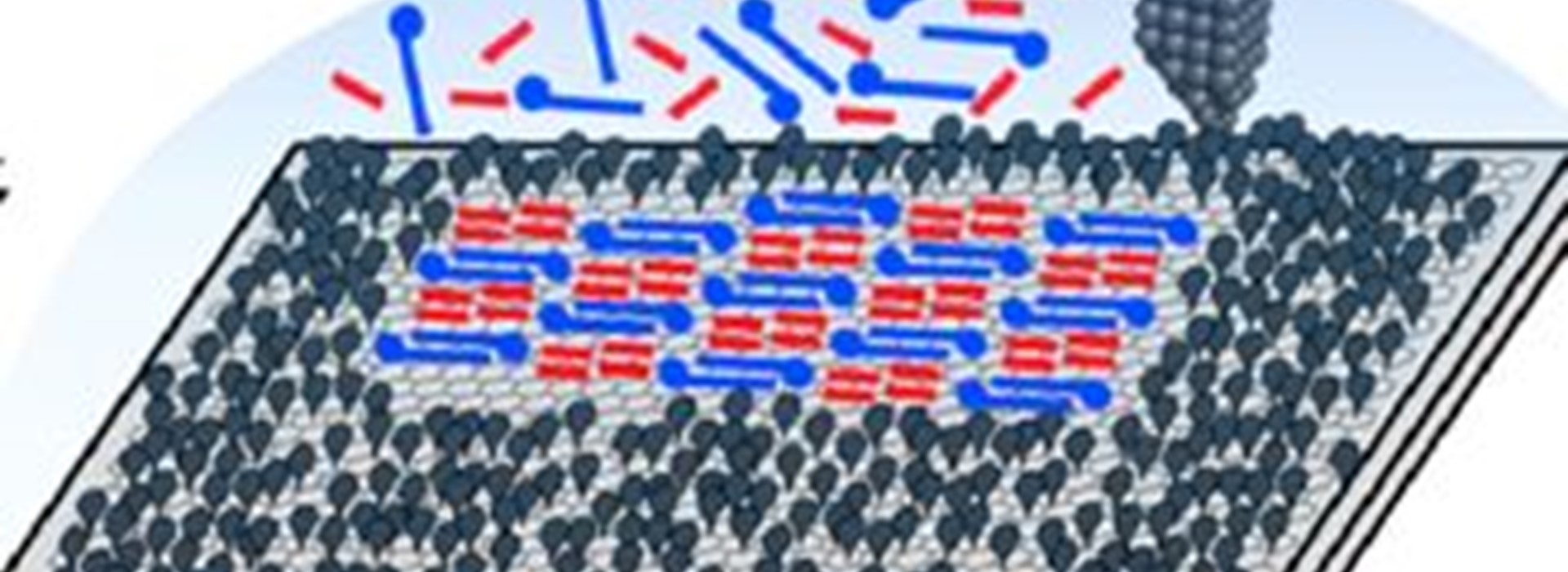Detection and Stabilization of a Previously Unknown Two- Dimensional (Pseudo)polymorph using Lateral Nanoconfinement

We report on the detection and stabilization of a previously unknown two-dimensional (2D) pseudopolymorph of an alkoxy isophthalic acid using lateral nanoconfinement. The selfassembled molecular networks formed by the isophthalic acid derivative were studied at the interface between covalently modified graphite and an organic solvent. When self-assembled on graphite with moderate surface coverage of covalently bound aryl groups, a previously unknown metastable pseudopolymorph was detected. This pseudopolymorph, which was presumably “trapped” in between the surface bound aryl groups, underwent a time-dependent phase transition to the stable polymorph typically observed on pristine graphite. The stabilization of the pseudopolymorph was then achieved by using an alternative nanoconfinement strategy, where the domains of the pseudopolymorph could be formed and stabilized by restricting the self-assembly in nanometer-sized shallow compartments produced by STM-based nanolithography carried out on a graphite surface with a high density of covalently bound aryl groups. These experimental results are supported by molecular mechanics and molecular dynamics simulations, which not only provide important insight into the relative stabilities of the different structures, but also shed light onto the mechanism of the formation and stabilization of the pseudopolymorph under nanoscopic lateral confinement.
Read more? J. Am. Chem. Soc., 2021, 143, 11080-11087
To enable comments sign up for a Disqus account and enter your Disqus shortname in the Articulate node settings.


